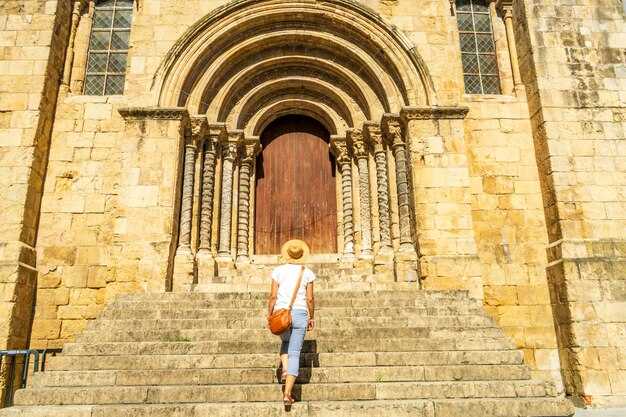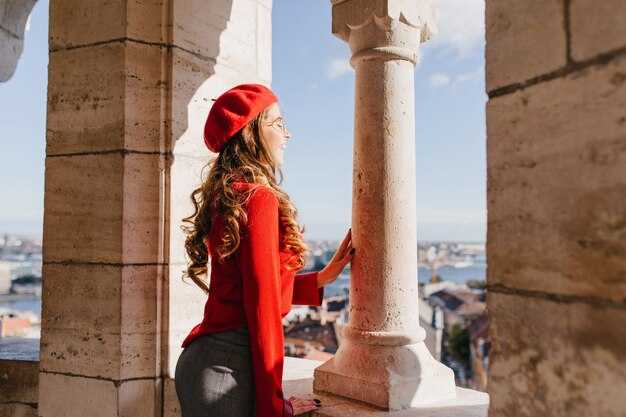Begin your visit with a dawn walk along the Grand Harbour, then ascend to the Upper Barrakka Gardens for a central outlook. Since Valletta sits on a promontory above the harbor, this first move delivers a crisp, cold breeze and a clear sense of the city’s scale before the crowds arrive.
Visit St. John’s Co-Cathedral to see the alternating light on limestone walls and the ceiling’s gold leaf. The church houses Caravaggio masterpieces, a treasure for visitando a small but intense collection of Baroque art. The climb to the fortifications along the high ramparts is a hard but worthwhile stretch, and from there you’ll overlook the harbour and Valletta’s winding streets.
In vallettas winding lanes, heritage is stitched into every doorway. The limestone façades glow under the sun, and you’ll sense the largest density of historic monuments within a single, walkable city wall.
For food and drink, seek out a taproom in a stone building near Republic Street, where Maltese snacks accompany local brews. Avoid peak hours if you want easy access to the best venues; otherwise you’ll encounter a crowded scene in the afternoon. since the british era left a legacy of squares and public houses, you’ll discover several places with friendly staff and solid local ales.
Visiting tips: buy a combined pass for museums and the fortifications to maximize opportunities within walking distance, because Valletta’s central layout makes most top sights reachable on foot. The largest open spaces are near City Gate and the Grand Harbour; plan a sunset stroll to see the harbor lights as ships drift by. Although crowded in high season, early mornings and late afternoons offer calmer experiences, and you can ride a bus from the central terminus to explore nearby districts like Sliema and the Three Cities on day trips.
Starting Point: Where to Begin Your Republic Street Stroll

Begin at City Gate on Republic Street, the western entrance to Valletta’s core. Set a comfortable pace along the stone-paved sidewalk and watch the traffic as the harbor glints beyond. Pop into a café for a quick espresso, then settle into a seat for a people-watching break–café culture here blends Maltese charm with a touch of cosmopolitan energy. If youre interested in how the city operates, this stretch shows the economic pulse of valette’s tourism scene in action and makes it easy to plan your next stop.
As you progress, renaissance details emerge in balconies and stone façades, a reminder of Valletta’s layered history. The Grandmaster’s Palace and Parliament anchor Republic Street, offering photo opportunities and a clear sense of state symbolism meeting modern activity. If youre interested in a quick detour, swing onto Merchants Street for artisan shops and Maltese snacks, then return to the main avenue.
Down toward St. George’s Square, the street narrows and the scale shifts to intimate shops and cafés. The navy presence along the harbor is visible in the distance and invites you to linger at a few vantage points for watching ships sail by. For a beach option, you can hop a short bus or taxi to nearby coves, though most visitors find the Republic Street experience satisfies the craving for sea air without leaving the city. The most memorable moments come from people-watching, doorway chatter, and the occasional street performance.
Practical tips to tailor your stroll
Plan a 60–90 minute loop and wear comfy shoes; the pace stays comfortable for most. The route is compact, with shaded arches ideal for a pause. It isnt crowded before 10:00, which helps families and solo travelers alike. If youre looking to extend your day, you can connect with julians or the coast by a short bus ride and round out your Valletta visit with a seaside stop for beers and a sunset view. Beaches are a quick bus ride away if youre craving sun, sand, and a different perspective on the city’s defenses.
Iconic Landmarks You’ll Pass on Republic Street

Begin at City Gate and plan a compact walk that covers the most iconic façades along Republic Street. The route connects the Grand Harbour with Valletta’s civic heart, and in the evening it becomes crowded as both locals and visitors mingle, inviting you to pause and admire the spaces between historic blocks. The same energy greets you at every corner, so keep a light plan and enjoy the rhythm without rushing. This doesnt require long detours.
Admire the largest church on the route, St John’s Co-Cathedral, whose interior shines with gold and sculpture. You’ll pass several churches along the way, each with its own story carved into the stone. The street’s corners and balconies offer shade and photo opportunities that fuel your curiosity and hint at a beautiful, timeless appeal.
- City Gate and the edge of Castille Place sit at the street’s start, where traffic slows and post and passenger flows mark the city’s rhythm; this launch pad fuels your exploration and highlights the economic heartbeat that connects everyday life to tourism.
- St George’s Square, with the Auberge de Castille facing the square, stands as Valletta’s political and ceremonial center. The imposing façade is a bang of Baroque beauty, a perfect scene to admire from a curbside bench.
- St John’s Co-Cathedral draws the eye with its dramatic interior; stepping inside is a transition from street to sacred space, a thing that often makes visitors linger and reflect.
- The National Library sits on Republic Street, offering wellness-inspired spaces for quiet reading and study; it’s an aside from the bustling lines of cafés and shops, a calm retreat for focused work or a moment of rest. The arcades along the sides shoulder the heat and foot traffic, making the whole block feel balanced and comfortable for longer visits.
- Along the walk you’ll notice a string of smaller chapels and architectural nooks; these spaces stand as living reminders of Valletta’s religious and cultural heritage, easily accessible to pedestrians and travelers alike.
- As you continue, the street sustains a steady rhythm of restoration and modern commerce, with shops, cafés and street performers adding color to the most crowded areas and making Republic Street the city’s vital economic artery.
National Museums and Historic Interiors on Republic Street
Begin at the National Museum of Archaeology on Republic Street and follow a compact loop to two historic interiors housed in landmark palazzi. This focused route keeps you close to Valletta’s pulse and lets you sample eras from antiquity to the recent past.
Inside, you’ll encounter a clear sequence of moments: prehistoric pottery, Phoenician links, and medieval silverwork, all presented in rooms with thoughtful lighting. The spaces preserve plaster detailing, ornate ceilings, carved balconies, and stone floors that reflect centuries of craft and trade.
Check the official pages for current hours and admission options; tickets are reasonable and family-friendly. Guided options in English help everyone interpret the displays with fresh context and local nuance.
Afterward, stroll along Republic Street to a nearby café or arrange a short private tour with a local operator. The street’s compact size makes it easy to linger, reflect on what you’ve seen, and plan your next Maltese stop with ease.
Coffee, Pastries, and Quick Bites Along the Walk
Start at Caffè Cordina on Republic Street for a double espresso around €2.20 and a flaky almond pastry. Cordina has been awarded multiple local accolades, and its front-window seating lets you watch the valette area with coloured facades pass by as you sip.
Walk toward the manoel theatre and along Merchants Street to grab a quick bite: a warm pastizzi or a small ftira from an attractive, economic option; these options are tourist-friendly and fuel your pace, thats how you stay energized for the next leg.
Continue to the front of the Grand Harbour where the mediterranean breeze and mild afternoon light enrich the mood; even a brief pause lets the gold limestone walls shimmer while you snap a quick photo.
Nearby cafes in the valette quarter offer nice spots with local intelligence about the best bites, avoiding the busiest corners where raids on quiet moments happen. The city was ruled by the Knights of St John, a historical note that deepens the setting as you sample Maltese pastries and modern, easy options that fit a busy itinerary.
Keep the walk light on rubbish and plan a short hop to the beaches by ferry if you want a post-snack dip; a pool of shade under a café awning makes the wait pleasant, and the naval history of the harbor adds depth to your stroll.
Shopping Stops: Souvenirs, Maltese Crafts, and Local Markets
Visit barrakka Market first for authentic Maltese keepsakes. You’ll find lace from the old workshops, filigree silver, Mdina glass, and hand-painted pottery. This official, must-visit spot sits near the Upper Barrakka Gardens and offers a wide selection that appeals to visitors and locals alike. Stalls often provide free tastings of olive oil, honey, and almond sweets, highlighting the power of Maltese flavors and the value of buying local dishes.
From there, stroll along Republic Street for examples of Maltese craftsmanship: fancy lace, filigree, glass, and pottery, plus Turkish-influenced ceramics and brass pieces. The range is wide, and you’ll see items once used in daily life–practical, yet decorative. For bang-for-your-buck options, compare several stalls; you’ll often find value that’s worth a visit for tourism-minded visitors.
Nautical themes draw many buyers: navy color accents, boats-shaped keepsakes, and harbour-inspired souvenirs capture the sights of Valletta’s waterfront. They pair well with Maltese dishes at nearby stalls, and locals often share quick tips on where to eat after shopping. If you hear about birgus from a vendor, treat it as a story tied to the harbour’s character and add it to your experiences in the market.
Timing and strategy matter: go early to beat crowds, carry cash for direct bargaining, and be ready to say thanks after a friendly exchange. Tourism blogs frequently highlight these stops, yet the official markets still offer free spaces where visitors can explore without pressure. Presumably, you’ll encounter used and fancy items; once you discover the right stall, you’ll find them worth bang-for-your-buck and soon become favorites for locals and visitors alike.
Timings, Crowds, and Accessibility for Best Experience
Arrive by 09:00 to beat lines at the most popular sites. These early hours let you enjoy Upper Barrakka Gardens, St. John’s Co-Cathedral, and the National Archaeology Museum with minimal interruption, including the surrounding viewpoints. check current hours before you go, and consider a five-stop plan to keep the journey efficient.
These sites tend to attract crowds from late morning through early afternoon; most popular areas grow busier by 11:00–13:00. Luckily, Valletta’s compact center makes a smart plan easy: map a few smaller, quieter spots around lunch and stroll to open-air views later in the day. If you’re trying to balance pace, this idea works well. These tips come together for a smooth day.
Accessibility varies by site. The government has funded upgrades throughout Valletta, and the reputation for accessible routes continues to grow. Historically, some interiors rely on stairs, so plan timed visits or use alternative spaces. The most useful approach is to map a path that stays on clear, level surfaces. kris at the information desk can recommend the easiest routes. For wheelchair or stroller users, the central districts tend to be comfortable and located close to lifts and ramps. These practical routes help you treasure highlights like grand views and intimate courtyards without slowing your journey.
| Site / Location | Typical Opening Hours | Mejor época para visitar | Accesibilidad | Notas |
|---|---|---|---|---|
| Upper Barrakka Gardens | Open all day; best morning | 09:00–11:00 | Ground-level access; some viewing areas have steps | Free views of Grand Harbour |
| St. John’s Co-Cathedral | 09:00–16:30 (varies) | 10:00–12:00 | Main entry is accessible; interior aisles have limited seating | Baroque masterpieces, modest dress required |
| National Archaeology Museum | 10:00–17:00 | 10:30–12:30 | Ramps and lift accessible; compact space | Includes artifacts spanning Maltese history |
| Fort St. Elmo & National War Museum | 09:00–17:00 | 14:00–16:00 | Mostly accessible; some ramped routes | Outdoor fortification areas available |
After the Walk: Nearby Sights and Easy Extensions
Begin with a 15-minute stroll to the Upper Barrakka Gardens for a high, beautiful view over the Grand Harbour, then descend by Barrakka Lift and hop a short inbound ferry to Birgu for a relaxed extension with coloured streets and boats bobbing along the quay.
-
Mdina and Rabat: a silent-city escape
From Valletta you can reach mdina in roughly 3.7 miles (about 6 km) by bus or taxi in 25–30 minutes. Wander the narrow alleys, peek into quiet rooms of old palazzos, and circle the magnificent St. Paul’s Cathedral. The reason this works as an easy extension is simply pace: you trade sea air for calm stone, and you can return to Valletta in the same day within hours. For a quick plan, enter through the gate, stroll the main square, then climb to the cathedral roof for a high perspective. If you’re traveling with a woman or a lady friend, you’ll find plenty of shaded courtyards and small cafés–the kind of place where lovers and locals alike pause to chat. Jean, a fellow traveler you might meet in a courtyard café, often notes how Mdina’s golden light at sunset feels like a scene from a coloured postcard. Hours vary by site, so check before you go, but St. Paul’s Cathedral typically opens in the morning and closes in the late afternoon.
-
The Three Cities by ferry: Birgu, Senglea, and Cospicua
Cross the Grand Harbour by a quick ferry from Valletta; the ride takes 5–10 minutes and runs from morning to evening, giving you a fresh look at Malta’s maritime theme. In Birgu (Vittoriosa) you’ll find coloured balconies, old armories, and a waterfront where boats float beside centuries of stone. A short walk reveals intimate lanes, small chapels, and a chance to imagine daily life centuries ago. Plan a 2–3 hour visit and return on your chosen timetable–inbound travelers often appreciate the flexibility. If you’re curious about examples of local life, watch a fisherman pull nets or a woman pause by a shop doorway to chat with neighbors. The experience is something you can tailor–even a casual stroll is rewarding, and the percent of visitors who extend their trip here tends to grow on pleasant afternoons.
-
Seafront strolls: Sliema, St. Julian’s, and the coast cache
If you want a softer seaside finish, ride or walk toward Sliema and St. Julian’s along the Tigné Point promenade. You’ll find sandy coves nearby and a string of boats along the harbour–perfect for a light walk, a coffee break, or a sunset view over gold-tinted water. This theme of easy extension is practical: you stay close to Valletta, yet you gain miles of coastline to explore. It’s ideal for someone who enjoys people-watching, tiny shops, and a quick seafood bite. For those who love a little people-watching, you’ll meet both locals and tourists, including a few dreamers who photograph the coloured façades and golden hour reflections. A casual loop of 60–90 minutes works well, or you can stretch to a few hours if you want to linger at a waterfront bar or lunch spot. If you’re traveling with a partner, this makes a gentle wrap to the day–lovers of easy coastal scenery often stay longer, next to boats tied up along a sunny quay.



Comentarios